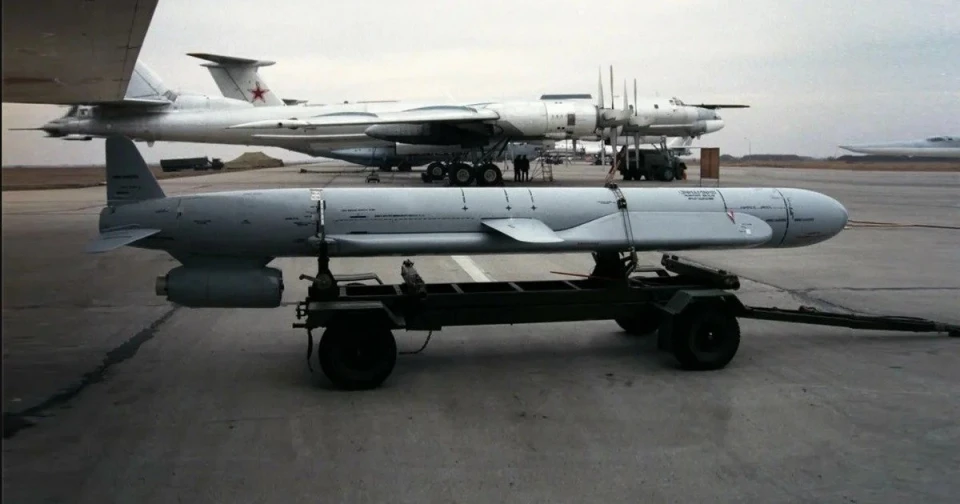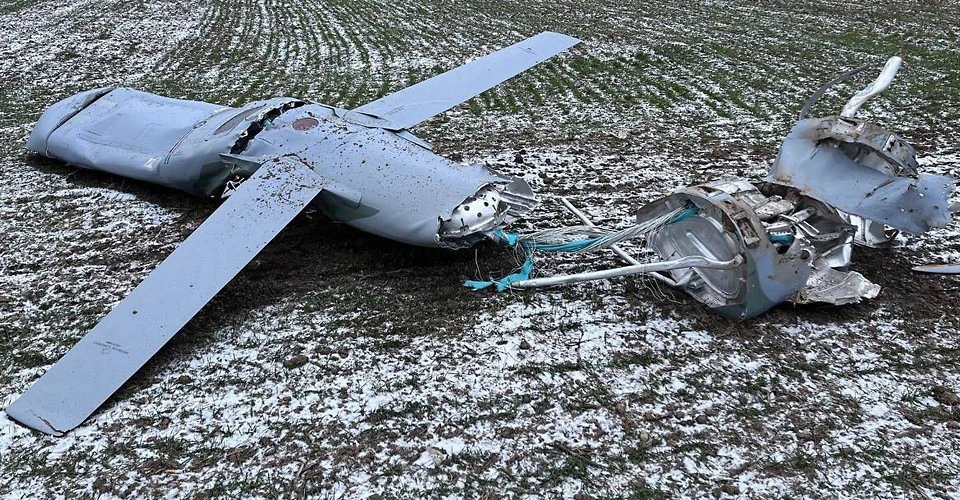
Modernized Kh-101 missiles: why they are dangerous
Russians refine weaponry with warfare experience. Latest: upgraded Kh-101 cruise missiles
Briefly about the text:
- What is known about the modernization of Kh-101 missiles
- Previous modernization
- What is known about the modernization of Kh-101 missiles attempts
- What is the Kh-101 missile and what are its features
- Tactical and technical characteristics of the Kh-101 before modernization
- How many Kh-101 missiles Russia has
What is known about the modernization of Kh-101 missiles
The Russians launched a powerful missile and air strike against the facilities of Ukraine's fuel and energy sector on the night of March 29, 2024. A total of 99 air attack weapons were used - Shahed UAVs, Kinzhal airborne ballistic missiles, Iskandar ballistic missiles, as well as Kh-59 and Kh-101/kh-555. As for the latter category, 21 Kh-101/Kh-555 cruise missiles were launched from eleven Tu-95MS strategic bombers in Engels, Russia, and 17 of them were destroyed.
The remains of these missiles revealed that they had been modernized. In particular, the telegram channel Colonel HSH provided a photo of the remains of a modified Kh-101 missile. Defense Express conducted a brief analysis of the data. Analysts noted that Russia began production of the Kh-101 with two warheads and the missile has indeed become twice as dangerous.
The main change is that the Kh-101 air-launched cruise missile received a warhead weighing 800 kg (previously, the missile had a 400 kg warhead). Interestingly, the Russians did not just increase the size of the warhead. Photos of the missiles shot down in March made it clear that the designers had placed two warheads on the missile. The additional warhead contains cubic-shaped warheads. Defense Express emphasizes that such elements are mostly used in anti-aircraft missiles. If the missiles are used to strike ground targets, these elements will have a significant impact on people.

Photo: defence-ua
In order to install an additional warhead on the missile, the Russians had to reduce the fuel tank and thus reduce the missile's range. However, this is unlikely to cause any inconvenience to the aggressors in their military operations against Ukraine.
“If the range is reduced from 5,500 km to 2,250 km (or even less), it does not matter much. If such missiles are launched from the Saratov region, even at targets in the Lviv region, such a Kh-101 will still have 500-700 km for additional maneuvers,” Defense Express explained.
Previous modernization
The Russians announced the increase in the warhead of the Kh-101 back in January 2024. Then, during Russian Defense Minister Sergei Shoigu's visit to the Raduga plant that produces these cruise missiles, one of the employees reported that the warhead had increased from 450 to 800 kg. However, then the man got confused and said that the Kh-59 missile would have a more powerful warhead (this is nonsense because the total weight of that missile is less than 800 kg)
The option of equipping the Kh-101 with two warheads has been traced in Russian sources since the mid-2010s, at the stage of development and testing of this missile.
At the time, it was stated that the 400 kg warhead could be divided into two in one of the missile's variants. The first one could be dropped by parachute at a distance of 100 kilometers from the main target. This option was abandoned at the time and has only now been revisited. But what kind of drop mechanism is used in the new version of the Kh-101 is currently under question.
Also in January, the Main Intelligence Directorate of the Ministry of Defense of Ukraine emphasized that the Kh-101 missiles used by Russia in early 2024 are significantly different from those used by the Russians to fire on Ukraine in 2022.
“The enemy is learning, and learning quite quickly. I'll just give you an example: Kh-101 cruise missiles are completely different from those used in 2022. This is a missile with an active electronic warfare system, with active protection, heat traps, etc.", said Vadym Skibitskyi, a representative of the Defence Intelligence of Ukraine.
At the time, Serhiy Zgurets, director of the Defense Express information and consulting company, noted that the Kh-101 with heat traps did not significantly affect air defense operations.
“The modernization of the Kh-101 missile, on which the Russians installed heat traps, appeared in strikes on the territory of Ukraine, in particular on Kyiv. We are talking about additional modules that have thermal and specially firing devices. This modernization of the Kh-101 missiles by the Russians is mainly aimed at countering man-portable air defense systems or missiles with a heat-seeking homing head. The modernization of the Kh-101 missiles does not affect the operation of the same Gepard, which destroys air targets using guns or air defense systems with other guidance systems,” the military expert told Espreso TV channel.
What is the Kh-101 missile and what are its features
The Kh-101 is an air-to-ground strategic cruise missile developed by the Russian design bureau Raduga in 1995-2013. The missile was put into service 10 years ago and tested in Syria, mostly for attacks against civilians.
The engine is located inside the rocket. It uses a combined guidance system - an inertial system with optoelectronic correction and a homing head that works at the end section. It can change the target during the flight.
 Kh-101 missile shot down in Vinnytsia region, photo: air force.ua
Kh-101 missile shot down in Vinnytsia region, photo: air force.ua
Kh-101 are air-launched missiles. They are launched from Tu-95MS and Tu-160 bombers, each of which can carry 8-12 missiles. The range before modernization was about 5,500 km.
As for the price of the missiles, the data varies considerably. Forbes Ukraine, trying to calculate how much it costs for the Russians to shell Ukraine, estimated that one Kh-101 missile costs $13 million. Representatives of the General Staff announced the amount of $12 million. However, Defense Express estimates that these weapons cost Russia ten times less - $1.2 million per missile.
Tactical and technical characteristics of the Kh-101 before modernization
- The length is 7.45 meters,
- Diameter - 0.74 m,
- Wingspan - 3 m,
- Weight - up to 2400 kg,
- Weight of the warhead - 400 kg,
- Fuel weight - 1250 kg,
- Maximum speed - 900 km/h,
- Cruising speed - 720 km/h,
- Range: up to 5500 km,
- Navigation: based on the GLONASS system.
How many Kh-101 missiles Russia has
In early April 2024, Vadym Skibitskyi, Deputy Chief of the Defence Intelligence of Ukraine, updated the assessment of missile production in Russia. According to the Defence Intelligence of Ukraine, Russia plans to produce 40 Kh-101 missiles in April.
According to official reports from the Air Force Command of the Armed Forces of Ukraine, the Russians fired 121 Kh-101/Kh-555 missiles in January, 41 in February, and 133 more in March. In other words, in the first quarter, Russia used 295 Kh-101 missiles, and it would take about 7.5 months for the Russians to produce this amount of weapons. Interestingly, at the beginning of 2023, representative Skibitsky spoke about the production of 30 Kh-101 cruise missiles by the Russians every month, and in May, Defense Express wrote about the production rate of 35 missiles per month.
Russian propaganda claims that the Kh-101 is based on a new technology and has exclusively Russian equipment. However, this claim has been repeatedly refuted. In particular, The New York Times reported that almost all of the modern Russian military equipment they investigated, such as encrypted radios and laser rangefinders, was made from Western semiconductors.
“That Russia has continued to make advanced guided missiles like the Kh-101 suggests that it has found ways to acquire semiconductors and other matériel despite the sanctions or that it had significant stockpiles of the components before the war began,” the article says.
Defense Express editor-in-chief Oleh Katkov noted that Russia uses American components for the production of Kh-101 missiles, which it purchases on the civilian market.
However, it is clear that Russia is consuming Kh-101 missiles at a faster rate than it is producing them. That is, it is using missiles virtually “off the assembly line.” This haste and the need to replace some imported components with domestically produced parts affect the final result. For example, on March 31, when the Russians launched a missile attack on the Lviv region, the wreckage of a missile that fell in a field in the Saratov region was made public. British intelligence then released its assessment of the incident.
The Ministry of Defense of the United Kingdom stated on April 9th that there was a high likelihood of failure for such a prestigious missile, indicating issues in its production likely influenced by sanctions and the rush caused by the need to meet the demands of the conflict.
As for the upgrade, as of February, the Ukrainian Armed Forces General Staff believed that Russia had failed to modernize the Kh-101 missiles.
“Studies and statistics of Ukrainian air defense systems have shown that the latest modernization of the Kh-101 cruise missile did not meet the expectations of the aggressor country. A massive breakthrough of the air defense system is not being realized, and Russian missiles are increasingly falling on the territory of the Russian Federation without reaching Ukraine,” said Colonel Mykola Danyliuk, representative of the Center for Research of Trophy and Advanced Weapons and Military Equipment of the Ukrainian Armed Forces General Staff.
- News













































